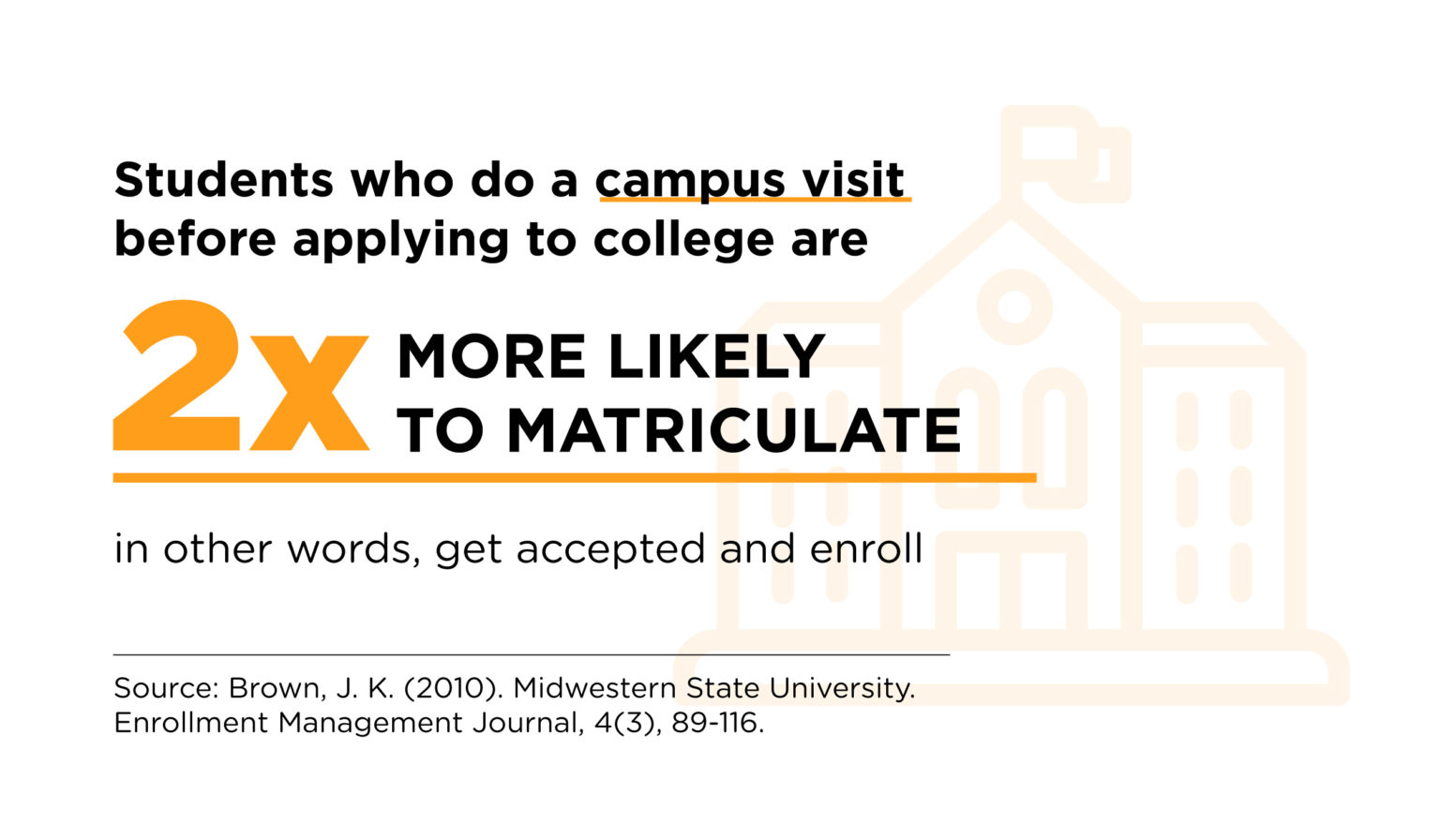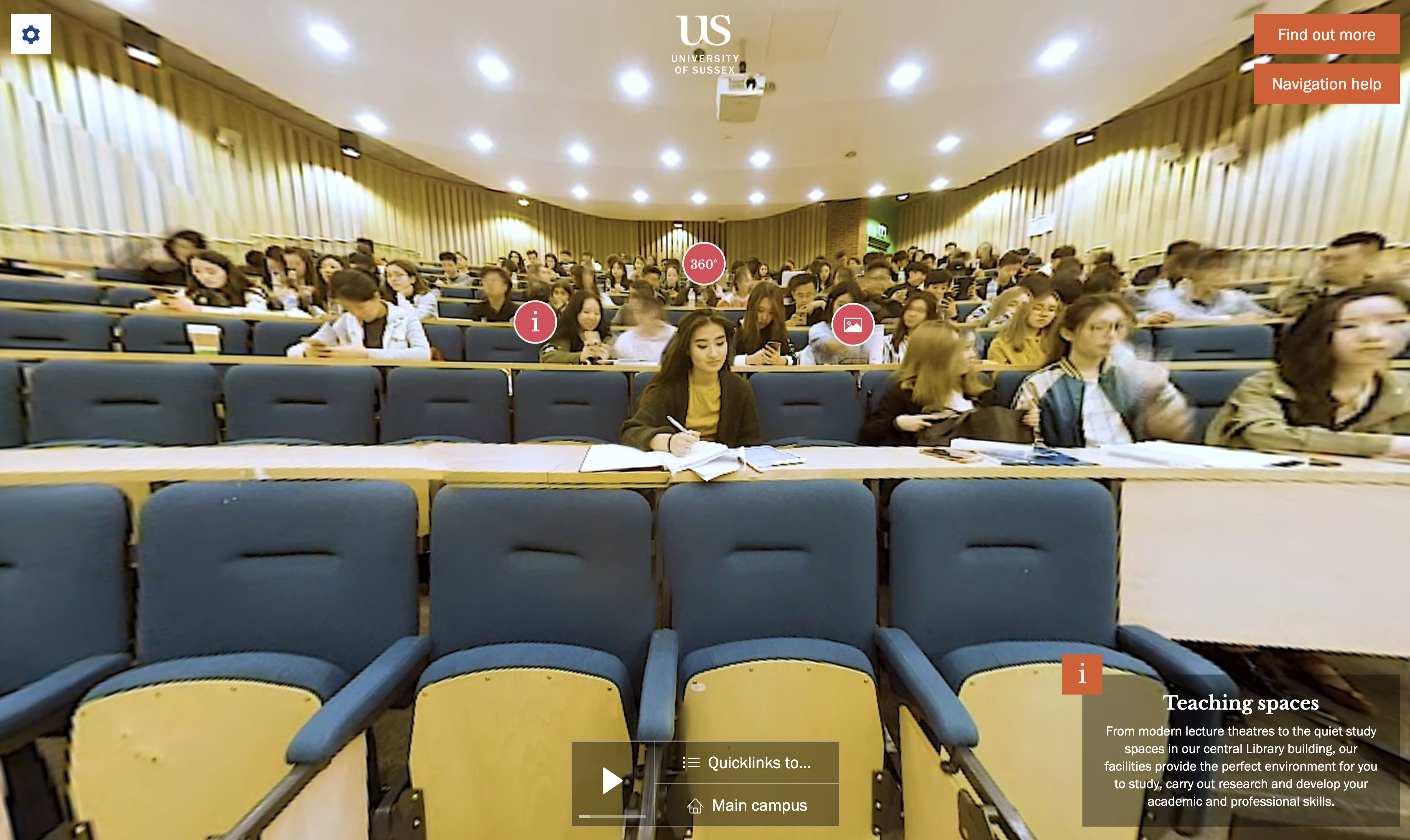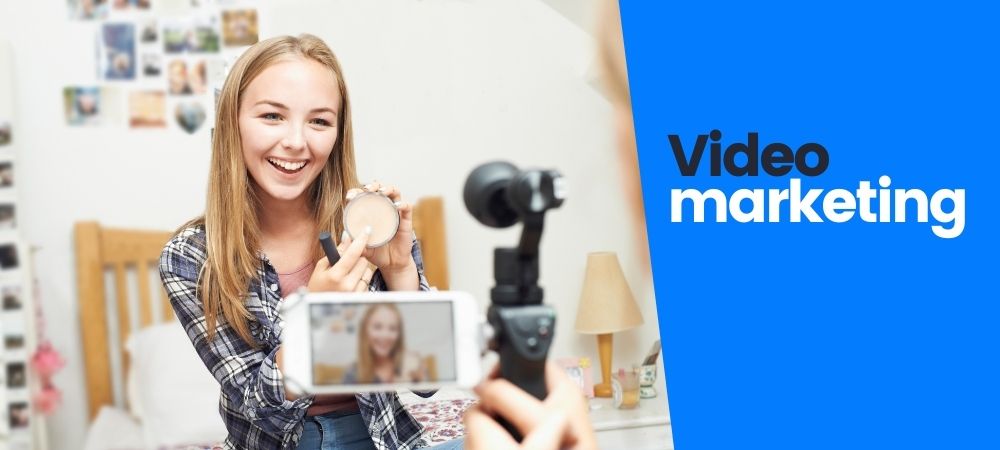Video is king for Gen Z. The numbers are undeniable.
- Nearly 90% of Generation Z, which constitutes most of today’s college students, use YouTube weekly.
- More than half use Tik Tok.
- Video marketing influenced nearly 70% of prospective students’ enrollment decisions, according to a recent survey by educations.com.
- 7 in 10 Gen Zers say watching videos with others helps foster connection, according to a Google study.
And with this demographic, the top four social media platforms are video-driven: Instagram, YouTube, Tik Tok, and Snapchat.
For teens and tweens, Gen Z’s younger, pre-college members, online video usage has also increased substantially. Between 2015 and 2019, time spent watching videos online more than doubled, according to Common Sense Media.
“Video provides an opportunity to accurately capture an institution’s ethos and ‘feel.’ Video storytelling can distinguish schools in a way few static campaigns can—emotionally.”
Pete Schatschneider, Sextant Marketing
What types of videos will engage students?
1. Brand stories
Videos can effectively demonstrate a school’s mission and values by capturing examples.
Berkeley demonstrates discovery and innovation, two of its brand values, by showing students and faculty in action. The video also demonstrates student diversity, another brand value, which helps elicit a sense of inclusive community.
2. Campus tours
Students who visit a school’s campus before applying are twice as likely to matriculate.

Note the date above. Fast forward a decade and it’s clear not all prospective students are willing to visit in person.
Schools can expand access to the campus by producing video tours. A campus tour video might highlight:
- Top campus spots
- Dorm life
- Learning facilities, such as labs or research centers
- Sports arenas
- A school’s hometown
Duke University’s video tour is a well-rounded example. The video offers an overview of different parts of campus, paired with key school facts.

University of Sussex in the UK offers an especially impressive virtual tour. The school combines video with virtual reality for an immersive and self-directed experience, narrated by current students. You need to configure it for your device, so check it out here.
3. Course content
Course content videos, such as clips of live classes, showcases faculty—a key enrollment criteria. Course content videos demonstrate faculty caliber and offer insight into their expertise.
Sample course content could include:
- Video clips of lectures
- Course overviews
- Faculty workshops
- Research presentations
Check out this faculty workshop from Stratford University’s School of Culinary Arts where Hugh Cossard, a Stratford professor, demonstrates how to make a “turducken.” The workshop showcases Cossard’s expertise, and gives students a sense of his personality and teaching style. The video also correlates to what prospective students would learn in class.
4. How-to videos
Consider integrating how-to videos into your application process. Easily digestible videos help lower potential application barriers and position schools as helpful resources.
Topics might include:
- Admission requirements
- Tips on writing college admission essays
- Financial information
- Acceptance rates and selection criteria
Oxford University’s how-to application video is an especially strong example:
Once students are enrolled, schools can continue creating how-to videos to support students. Videos can provide guidance with more complex processes, like registering for classes or reapplying for financial aid.
Miami Dade College’s “How to Videos” webpage offers several good examples.
5. Livestreamed events
Research also suggests live video is three times more engaging than on-demand.
Schools can foster engagement with prospective students through livestreamed events. Like campus tour videos, live streamed videos help form personal connection from afar.
Consider live streaming:
- Guest speakers
- Forums and panels
- Graduation ceremonies
- Arts performances
- Sporting events
Post-event, schools can upload live streamed videos to the school’s YouTube page—Gen Z’s preferred video platform.
6. Testimonials
Research shows prospective undergraduates are 33% more likely to value student reviews than in previous years. Video testimonials are a powerful—and persuasive—way to showcase students’ experience.
Video testimonials help build emotional connection through empathy. Subjects should emphasize personal experience and impact to maximize emotional resonance.
Check out the video testimonial from Nova Scotia College of Art and Design (NSCAD). Students build rapport with views by sharing personal experience. Testimonials emphasize NASCAD’s impact on students’ artistic development. The video also intermixes faculty testimonials, helping diversify perspective.
Schools might also consider producing video testimonials which primarily feature:
- Alumni
- Staff
- Faculty
7. UGC on social media
In a 2019 educations.com survey, 72 percent of undergraduates reported using social media to research school options. Given Gen Z’s preference for YouTube, Tik Tok, and Instagram stories, schools must prioritize video marketing on social media.
Gen Z increasingly prefers user-generated content (UGC) on social media, which is unscripted and appears more “authentic.” Potential ideas include:
- “Day-in-the-life” videos, which chronicle a student’s typical day
- Running a student-generated video campaign on YouTube
- Reposting Tik Tok videos
Remember to keep your videos brief. Gen Z has a strong filter for content worth consuming online. Video content must win Gen Zers over in 8 seconds or less.
Hone your higher education video marketing
Develop a creative strategy
Develop a video marketing strategy to ensure your video content supports your enrollment goals. Video strategy should integrate into the overall marketing plan, so each component works together to reinforce the brand.
Strategic planning questions include:
- Who is the specific target audience (age, gender, demographics)?
- Why should people watch the video?
- How will video content be delivered?
- What action will the video inspire?
Evaluate the competition
Evaluate your competition’s video marketing. Understanding a peer institution’s approach helps ensure your school content remains unique—and might inspire new ideas.
Evaluation questions could include:
- Which competitor videos receive the most engagement?
- Which characteristics are most emotionally resonant?
- How is the school’s brand portrayed?
Include CTAs
Never pass up the chance to include a call-to-action (CTA). CTAs tie story to product, offering viewers the resources needed to take action.
Consider the following options for video marketing CTAs:
- Include a concluding slide with school website
- Incorporate next steps into video script
- Include CTA slides between sections
Make it mobile
By 2022, experts estimate mobile video will account for half of all video traffic. About 90% of incoming students own smartphones. Schools must ensure videos are mobile-friendly.
Mobile-friendly tips include:
- Format videos per each platform
- Include readable captions
- Optimize video thumbnails
- Limit video length
Prioritize production quality
Videos should be as highly produced as possible. Gen Z expects polished videos on websites and YouTube, as opposed to user-generated content on social media.
Schools should invest in high-quality video equipment to ensure polished presentation. Consider using:
- External microphones to upgrade audio
- Professional cameras (vs. smartphone)
- High-quality lighting
Publish captions
According to Verizon Media, 69% of consumers watch video without sound. Omitting captions drastically limits a video’s accessibility and might dissuade viewers from watching.
Schools can create their own captions via YouTube studio, or hire a video production company. Schools should also include real-time captions during livestreamed events. Consider hiring a transcription company like CaptionSync to manage real-time captions.
Video marketing is essential for engaging Gen Z, who prize video over other digital content. Videos help schools spark emotional connection, strengthen brand, and capture ethos. With student enrollment declining, strong higher education video marketing is key to an institution’s enrollment success.









